The Aghia Triadha Sarcophagus
from a tomb near Aghia Triadha
c. 1400 BCE
Painted limestone: height of scenes with figures, 6 inches
(Archaeological Museum, Herakleion, Crete)
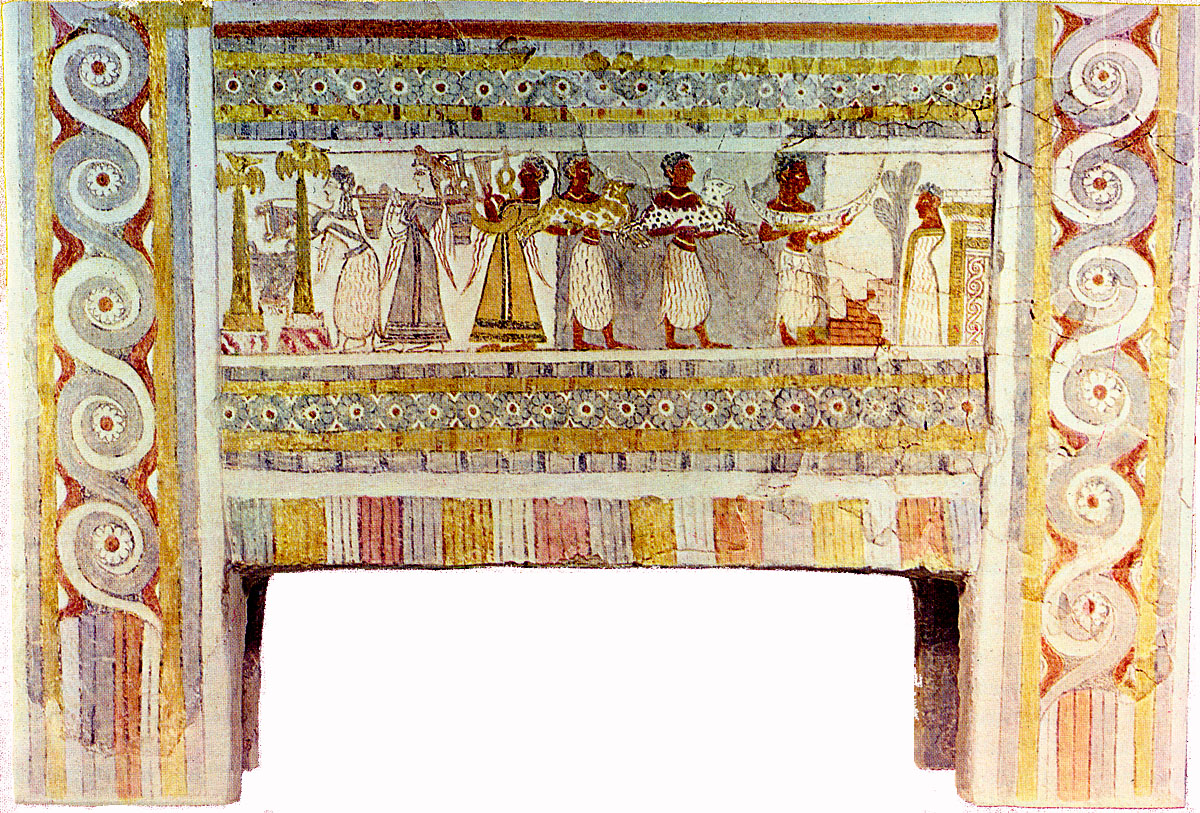
There is much conjecture about the complicated and difficult topic of
Minoan religion, since much of the evidence is inconclusive. The Aghia Triadha sarcophagus, a painted limestone coffin, dated to around 1400 BCE, is important evidence both for Minoan painting and for Minoan religion. One longer side (panel A) shows two scenes, though the background is divided into three sections.
The scene on the right shows three men carrying models of animals and a boat (?) approaching a stepped altar (?), a tree, and a cloaked figure in front of a tomb (?).
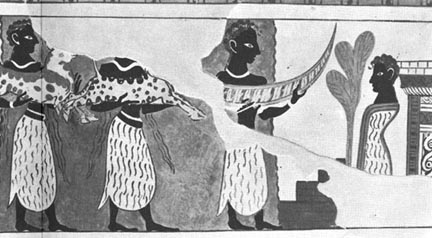
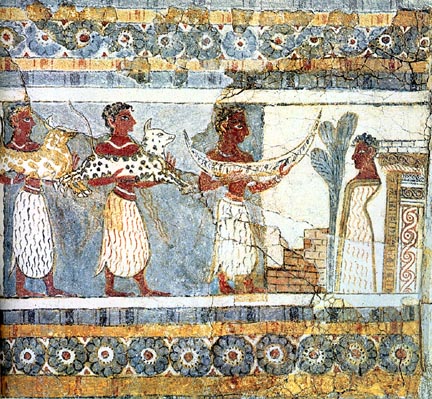
Panel A, right
On the left we see a woman pouring a libation (a drink
offering) into a large vessel positioned between posts crowned with
double axes on which birds perch. Behind her come an attendant carrying more
vessels slung across her shoulder, and a man playing a lyre. The man is dressed in the same costume as the woman in front of him.

Panel A, left
The other longer side (panel B) shows a procession of three women (only the lower parts of two of the women survive), led by a man playing the double flute. Who passes behind a trussed bull on a sacrificial (?) table beneath which are two animals (goats?).
On the right, a woman stands in front of an altar (?) looking up. Above the altar, as if floating in space, are a vase (recognizable as Kamares style) and a handled bowl of fruit (?). To the right of the altar is a tapered pole supporting double axes on which a black bird perches facing the woman. On the far right is a shrine (?) topped with a row of "horns of consecration". Behind the shrine is a tree.
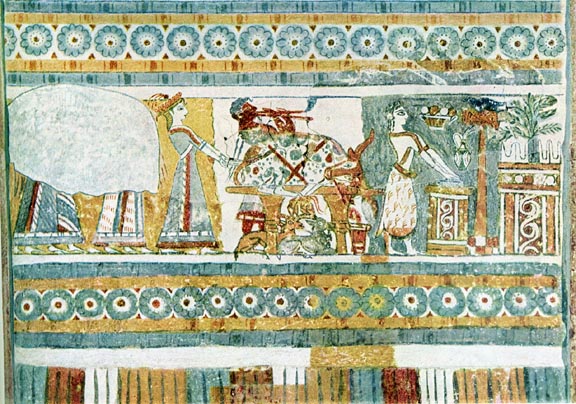
Side B

Panel B
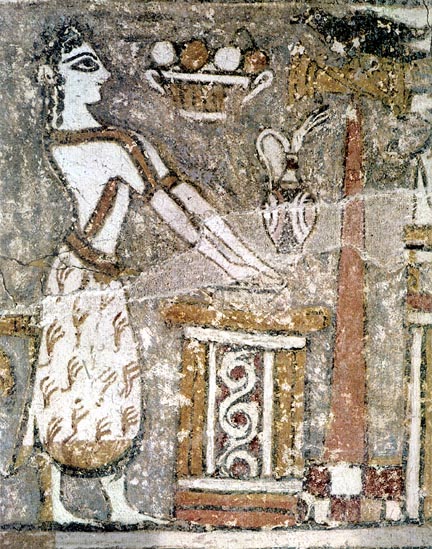
Panel B, right
A painted panel at one end (A) of the sarcophagus shows two women in a chariot drawn by a griffin.

End Panel A
The panel at the other end (B) shows two women in a chariot drawn by a horse.
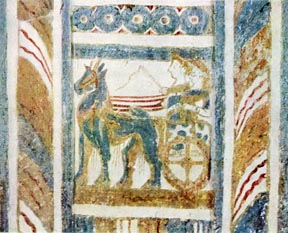
End Panel B

 SPRING 2016
SPRING 2016  SCHEDULE
SCHEDULE  REQUIREMENTS
REQUIREMENTS

 SPRING 2016
SPRING 2016  SCHEDULE
SCHEDULE  REQUIREMENTS
REQUIREMENTS